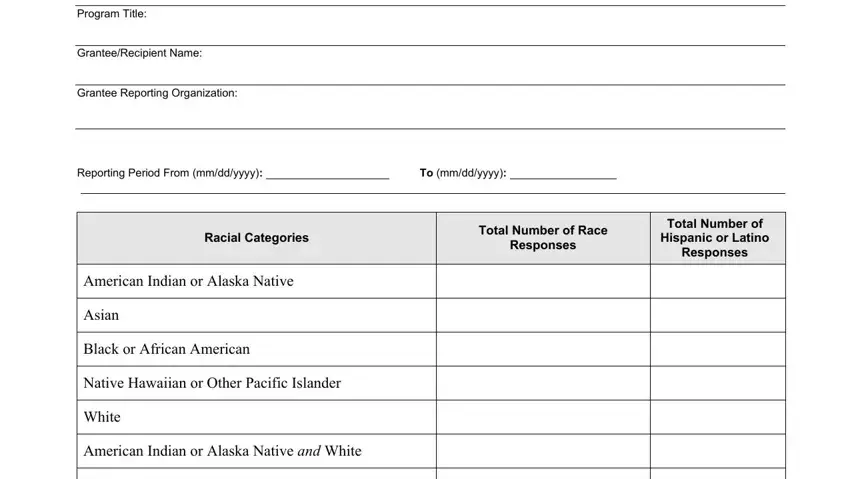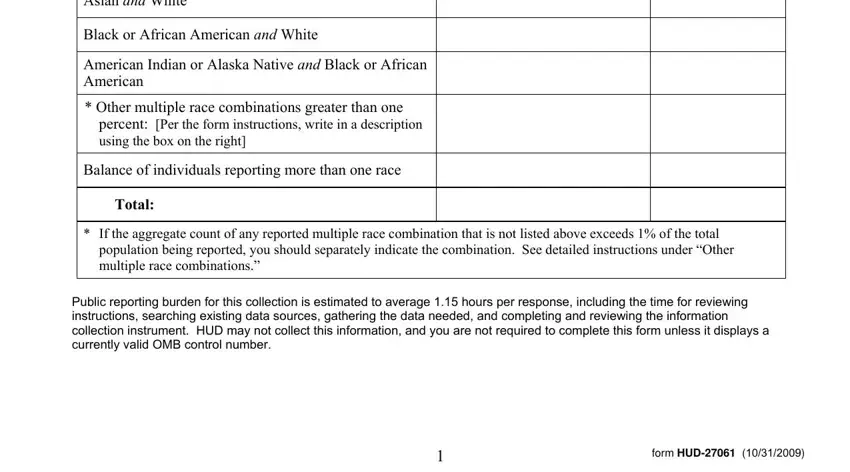You'll be able to complete Form Hud 27061 effectively using our online editor for PDFs. Our team is continuously endeavoring to develop the editor and ensure it is even better for clients with its handy functions. Enjoy an ever-improving experience now! By taking some simple steps, you may begin your PDF editing:
Step 1: Open the PDF file inside our tool by clicking on the "Get Form Button" in the top area of this page.
Step 2: With this advanced PDF editor, you'll be able to do more than merely complete blank form fields. Express yourself and make your documents seem professional with customized textual content incorporated, or adjust the original input to perfection - all supported by the capability to incorporate almost any photos and sign the file off.
This document will involve specific information; in order to guarantee correctness, make sure you take note of the tips directly below:
1. It is important to fill out the Form Hud 27061 properly, therefore be careful while filling out the areas that contain all these blank fields:

2. The third part would be to submit these particular blanks: Asian and White, Black or African American and White, American Indian or Alaska Native, Other multiple race combinations, percent Per the form instructions, Balance of individuals reporting, Total, If the aggregate count of any, population being reported you, Public reporting burden for this, and form HUD.

It's easy to make a mistake while completing the American Indian or Alaska Native, thus you'll want to go through it again before you finalize the form.
Step 3: Immediately after looking through your form fields, hit "Done" and you're all set! Create a 7-day free trial account at FormsPal and gain immediate access to Form Hud 27061 - which you may then start using as you would like inside your FormsPal account. FormsPal is focused on the confidentiality of all our users; we make sure all personal data used in our tool continues to be protected.



